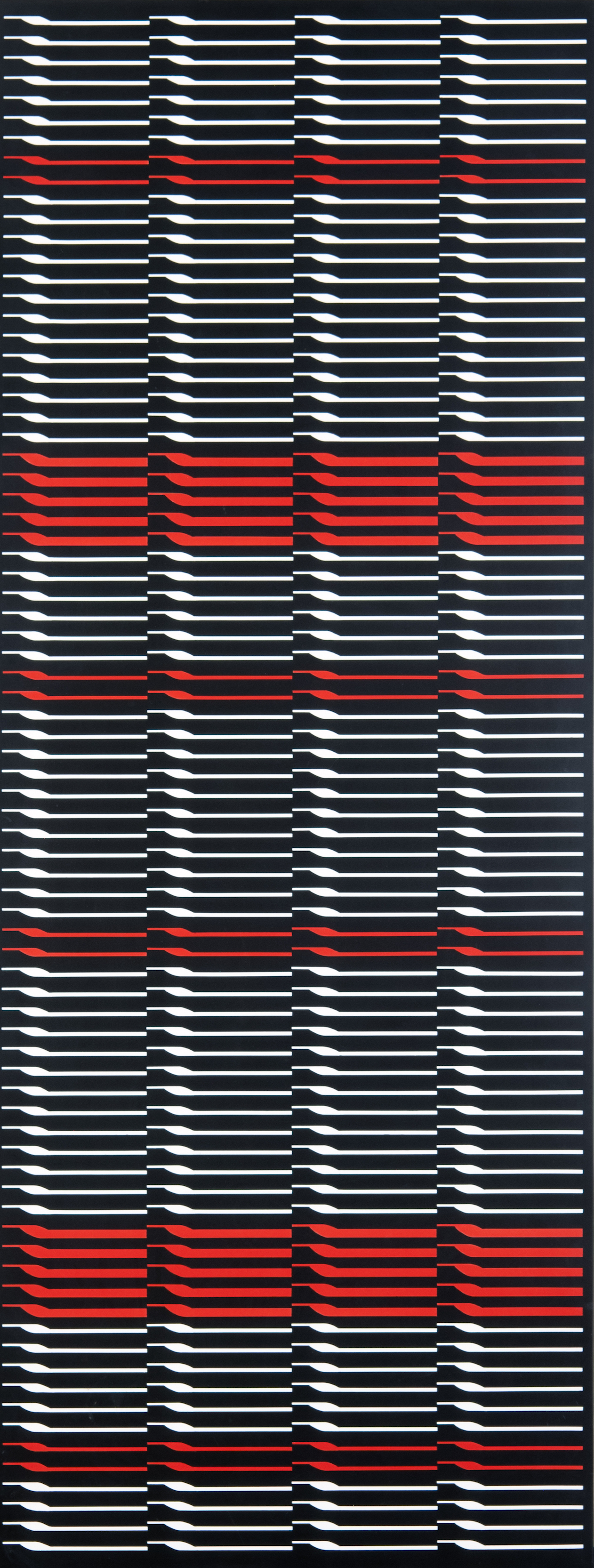Mateo Manaure attended the Escuela de Artes Plsticas y Aplicadas in Caracas. In 1947, he was awarded the Premio Nacional de Artes Plsticas and received a scholarship to study in Paris. Up to that point, his painting had portrayed traditional subjects painted in an expressionist style. On his return to Caracas he founded with others the Taller Libre de Artes (1948) before returning to the French capital again, where he practiced Surrealism and illustrated Oswaldo Trejo’s book Escuchando al Idiota (1949).
In 1950, Manaure co-founded Los Disidentes, a young group of artists and intellectuals living in Paris who rebelled against Venezuela’s stagnant cultural values and promoted a movement of aesthetic reformation that resulted in the development of abstract-geometric art. Once again in Venezuela, he organized the collective exhibition Primera muestra de arte abstracto (Galera Cuatro Muros, Caracas, 1952) and participated in Carlos Ral Villanueva’s project at the Ciudad Universitaria de Caracas contributing several works, including Bimural for the Plaza Cubierta (1954). His first stage of abstract geometric works culminated with an exhibition at the Museo de Bellas Artes (Caracas, 1956), which included a selection of paintings that showed his passion for the characteristics of color.
Experimenting then with the subjective language of lyrical abstraction, Manaure again took up figurative painting in works of imaginary and poetic landscape visions he called Pinturas sobremontaje, which in some cases combined photographic collages. He exhibited these works at the Sala Mendoza (Caracas, 1962, 1965 and 1967). This stage ended the series Suelos de mi tierra y selva, psychic landscapes characterized by rarified atmospheres without clear references to nature.
Manaure revisited geometric abstraction with a series of serigraphs titled Cuvisiones, comprised of optical effects emanating from orthogonal patterns of cubes, and chromatic contrasts that gave an illusory sense of vibration and volume. He used these Cuvisiones to illustrate a storybook written by Arturo Uslar Pietri, and he exhibited them at the Sala Mendoza in 1969. Cuvisiones inspired the development of new visual experiments in which the Manaure created structures and spaces that departed from virtual painting. In 1977, he displayed his Columnas Policromadas at the Museo de Arte Contemporneo de Caracas, a series of compositions in which color, arranged in vertical strips, contributed as much to volume and movement of the work as to its lyricism and mystery. The pictorial character of these works did not prevent the viewer from compreheding their sculptural and architectonic qualities.
At the beginning of the 1980s, Manaure entered a new figurative stage. At this time, social subjects as well as a personal interest in pre-Hispanic symbols and myths predominated in series such as Mirar a Amrica (1981), Orinoqua (1989), and Ofrenda a mi raza (1992), and others. In 1996, Manaure presented the exhibition Saludo al tercer milenio (Galera Muci, Caracas), in which, once again, he demonstrated his abstract-geometric vocation.

